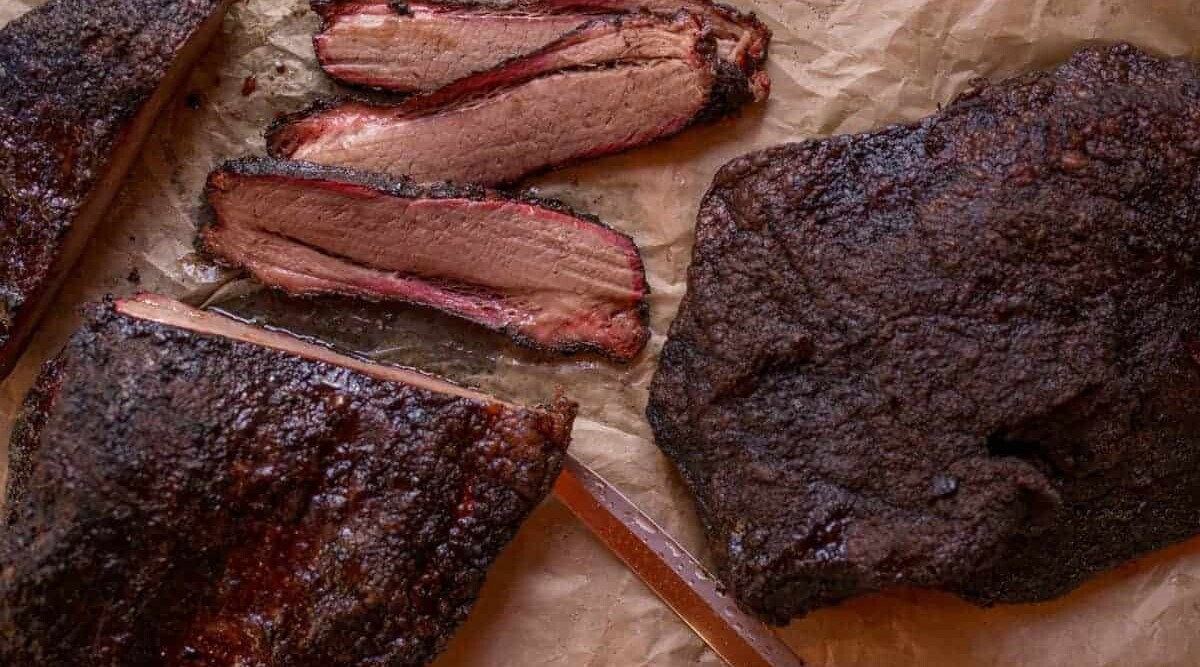
In this post, I’ll explain what BBQ bark is, how it’s made and share with you my top tips for achieving this nirvana on your very own grill, whether charcoal or gas.
It’s not hard to do and, once you’ve nailed it, tasted it and wept tears of joy, you may never want to grill another way again!
A friend of mine recently grilled up a bo ssam, a Korean slow-cooked pork joint with a crust that will make you think you died and went to heaven. No kidding, this was extreme bark like I’d never experienced before…we had to take a hammer to this bad boy.
A crunchy, sweet, salty, caramelized cocoon of a crust cracked open to reveal a treasure trove of succulent, moist, melt-in-the-mouth pork. I am drooling a little now just thinking about it!
So if you’re screaming “Just tell me how to make this”, I can help!
The secret to this particular grilling greatness is bark. When you seal, sear and smoke the exterior of your meat, you create two ridiculously good things: a delicious dark and complex crust and, a tender, moist meat inside. It’s a massive part of what makes smoked brisket so delicious.
Jump to:
What Is BBQ Bark?
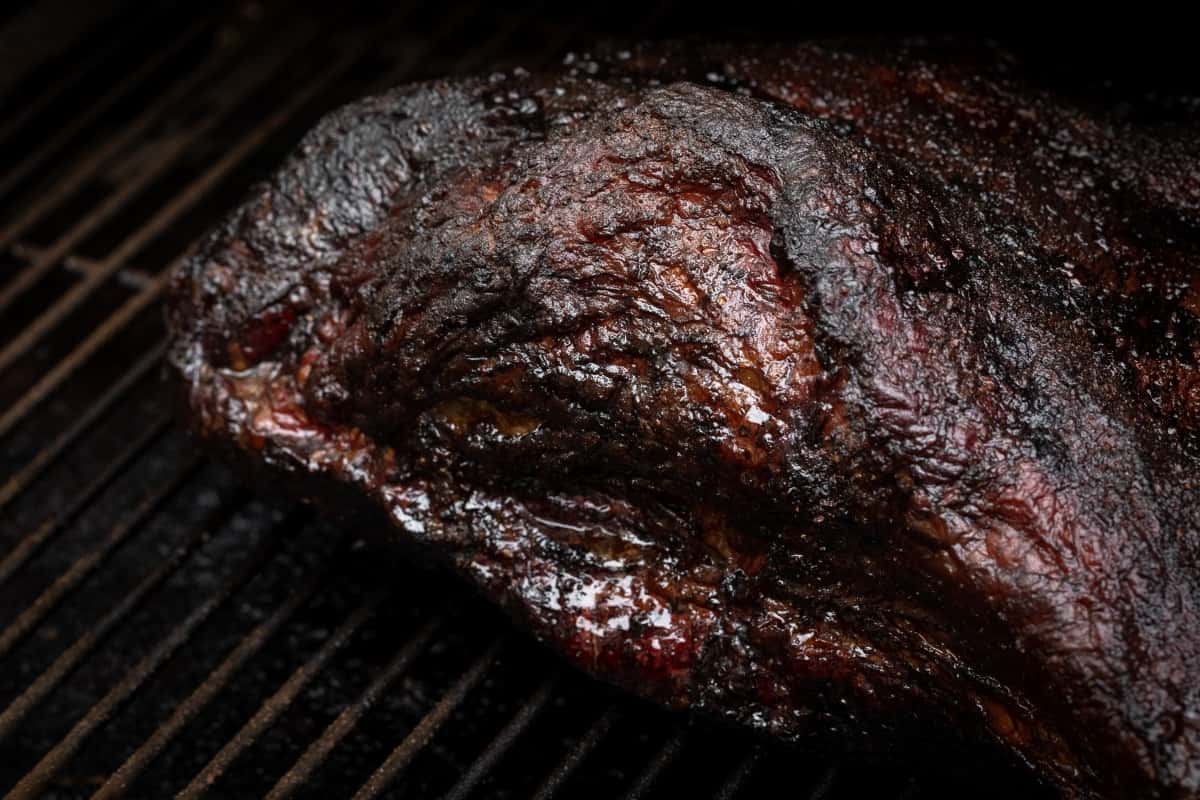
Done right, it’s the stuff that gets top scores at BBQ competitions: a hard, crunchy, deep and complex crust around a joint of meat that contrasts beautifully with the soft and succulent slow-cooked meat inside. A good bark will make you forget your manners, maybe shove an elderly relative out the way so that you can get seconds (or thirds or fourths)!
The process at the core of bark formation is the Maillard Reaction. This is defined as an array of non-enzymatic chemical reactions between carbonyl (primary carbohydrate) and amino compounds of biological origin. And for those of us without a Ph.D. In molecular biology, this basically means the process of browning!
Take raw ingredients and apply heat, let the natural sugars and proteins do their stuff, and you get enhanced, deep, complex flavor.
Ever seen a coffee bean in the raw? It’s a wimpy-looking, soft, pale seed that you would never believe was the very same thing that kicks your butt into action every morning with its powerful strong flavor. That’s the Maillard Reaction.
And with meat, the magic is just as powerful, turning raw and even tough meat fiber into a juicy, tasty bite with a delicious dark mahogany crust.
Check out this great short video showing up-close and personal what BBQ bark is. (Warning: will make you hungry!)
How Is Bark Formed?
It’s the result of a series of complex chemical reactions, but fortunately, it’s not complicated to make! The simple answer is when you combine the following factors in the right way, you will get bark:
- A spice rub based on sugar and salt
- Smoke
- Water vapor
- Low temperatures
Let’s take a closer look at each of these factors.
Spice Rub
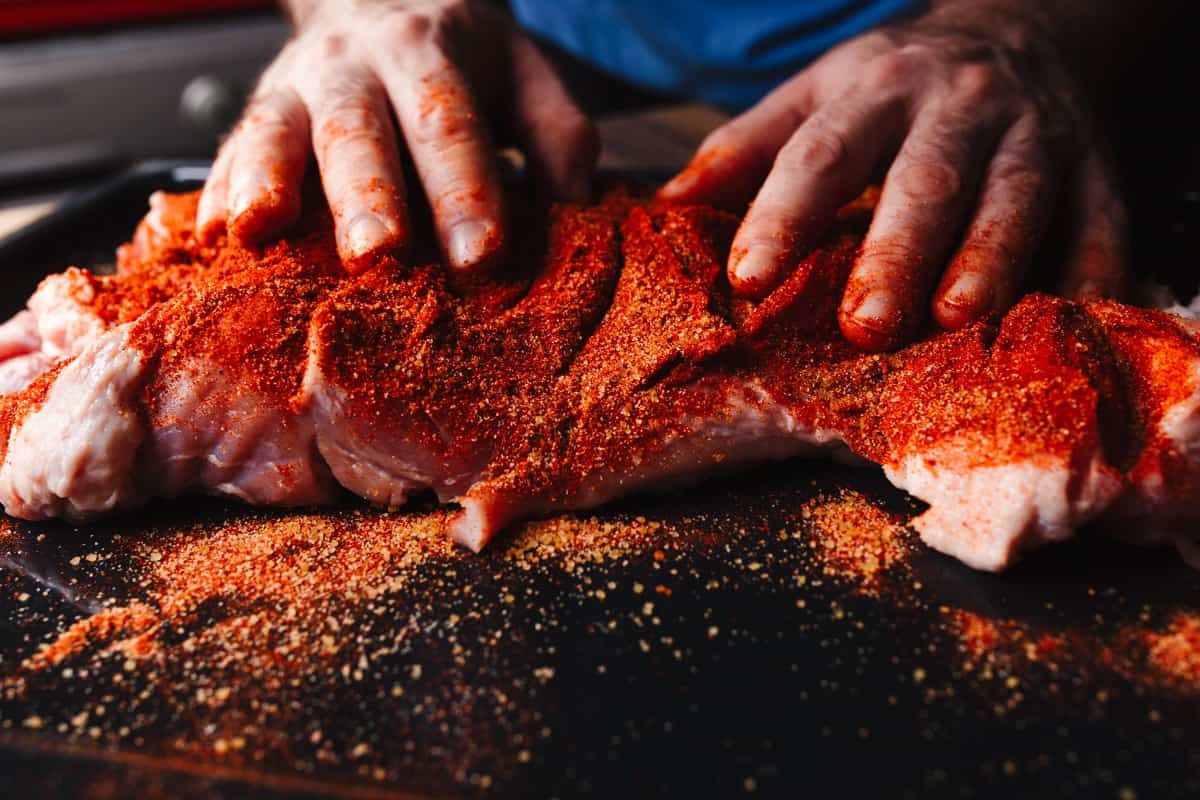
This is your starting point, and beyond sugar and salt which are the backbone of a good bark rub, you can add whatever you like.
Classic spice rubs will often include paprika and pepper. But cayenne, onion powder, garlic powder and ginger are other popular rub ingredients that will affect the taste and consistency of your end product (bark). A rub heavy on spices will typically be thicker than a mainly salt-based rub.
Sugar is a tricky thing with grilling. At high temperatures, sugar, as we all know, burns quickly leaving you with a bitter charred piece of meat. But since smoking is done at lower temperatures (typically under 300 °F), you shouldn’t have problems with sugar in your rub. Some still recommend that beginners add sugar towards the end of a smoke to be on the safe side.
Smoke
After the rub, smoke is the next most important factor in achieving a good bark. Over time, smoke particles will adhere to the surface of the meat, melding with the spices, turning its color darker, and infusing it with that deep licorice sweet flavor we can’t get enough of.
The longer the meat is smoked, the darker it will get until it’s almost blackened, but not burnt.
Water Vapor
As the seasoned meat heats, it will release moisture. This together with water vapor from the smoke will act to dissolve water-soluble ingredients in the rub…especially salt which will then be absorbed into the meat to season it deeply.
Other spice ingredients are too big to penetrate the meat but will dissolve in surface fat and flavor the surface of the meat.
Temperature
As with all things to do with grilling, the temperature is key.
Meat cooked at too low a temperature will not form bark, and meat cooked at too high a temperature will char and burn. So what’s the sweet spot?
Pitmasters like Meathead Goldwyn recommend around 225° F as an ideal temperature for the smoker. But since grills and smokers all have their own personalities and quirks, you may need to experiment a little within the 200-300° F range to hit your own Goldilocks temperature (just right!) for smoking great bark.
How Does Fat Affect Bark Formation?
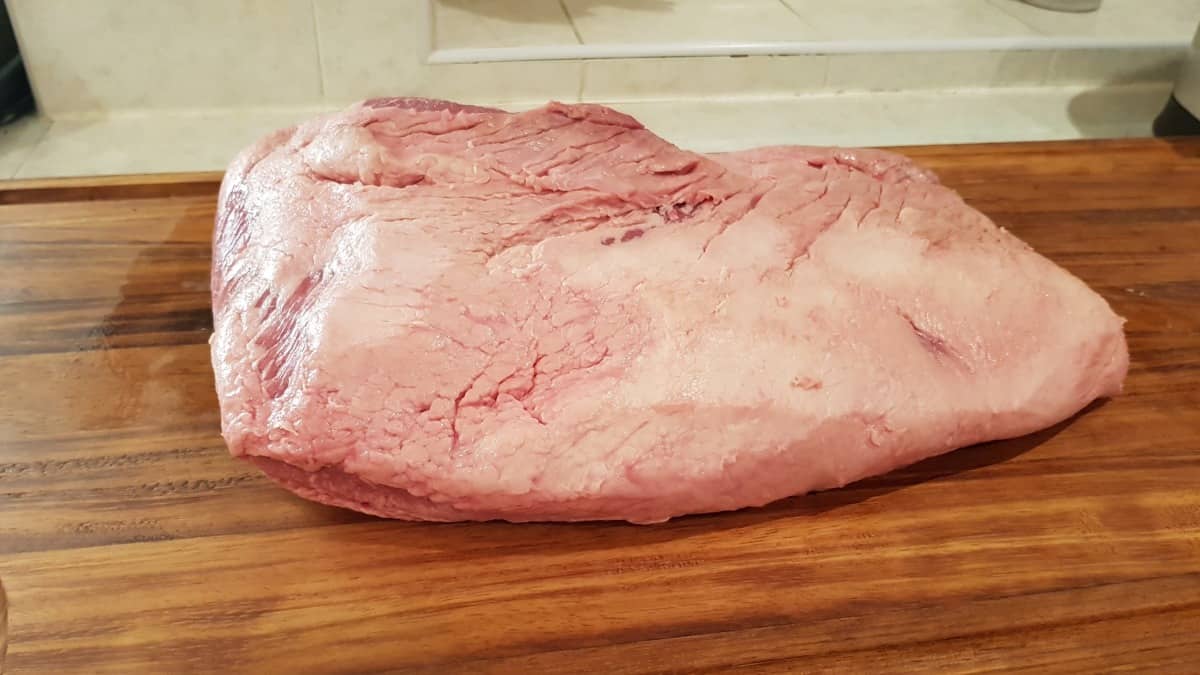
Fat — how much and what kind — is often an essential part of the grilling process, contributing to meat’s deliciousness, tenderness, and juiciness. But you may be surprised to learn that a lot of fat is not essential to the formation of bark.
All meat, even lean meat, will have some fat and when this melts during grilling, it helps to moisten the meat and adhere to fat-soluble spices.
But studies have shown that the quantity or even lack of fat on a piece of meat does not affect the formation of good bark. In fact, too much fat is not recommended, so if your joint has a large fat cap, cut most of it off. (Particularly good advice for the large fat caps on a beef brisket or Boston butt.)
A Little Bit O’ Science About Bark
Delving deep into the science of grilling and the chemical reactions caused by heat is always fascinating. But I’m usually impatient to get to the end result…just show me how, so I can go fire up the grill and eat something uber-tasty!
But let’s take a moment here to talk a little nitty-gritty science, so you can wow friends and family with your intel at the next cook-out.
We already talked about starting with a good spice rub. But the real magic starts when you add heat and smoke. The first thing that happens is the meat will release moisture, and this will mix with water vapor in the smoke to dissolve salt, sugar and water-soluble spices in the rub. Fat then begins to melt and rise to the surface to dissolve fat-soluble spices and a gritty, pasty glaze forms which is the beginning of the bark, in the form of a spice crust.
As the heat increases and time elapses, the moisture will evaporate, and the meat begins to dry. At this point, surface proteins start bonding together to form polymers which will bake into a hardened layer (the pellicle, AKA the bark).
But there’s more going on. In fact, any time you apply heat in cooking, a whole boatload of chemical reactions start firing off simultaneously. On a smoking piece of meat, the sugars in the rub begin to react with proteins to brown and caramelize, helped by the rendering of surface fat (the Maillard Reaction).
As the meat undergoes these chemical transformations, smoke particles adhere to the surface paste, further enhancing the complexity of the flavor and changing the color into a deep ebony.
I’m telling you, it just keeps getting better and better. It’s the smoke, in fact, which really gives BBQ bark it’s characteristic deep licorice lacquer color. Seemingly burnt, but not.
Which Meats Are Best for Getting Good Bark?
The good news is you don’t have to fork over a wad of cash to get meat that will result in great bark.
Large inexpensive cuts that shine with a good long smoke are your friend here: Pork shoulder or butt (pulled pork), beef brisket, and ribs will all produce fantastic bark when given a tasty spice rub, and a good long smoke.
8 Hot Tips for Getting Great Bark
- Make sure your meat is good and dry. Pat well with paper towels before applying the rub.
- Go for maximum surface area. More canvas for your rub to work on equals more delicious bark! Cut big thick joints in two, and cut ½” deep gashes in it with a sharp knife so that you can work the rub deep down into the meat.
- Fix yourself a good dry rub, but don’t feel the need to get fancy! Some of the best barks are produced with nothing more than salt and sugar (like the bo ssam I had). It’s all in the technique. Check out this guide for a good brisket rub recipe for maximum bark.
- Make sure if there is good airflow all around the meat so that the bark can form. No trays here. Putting the meat directly on the grate is best. You can always add a drip pan below to catch juices and prevent flare-ups.
- Don’t wrap the meat in foil during cooking (the Texas Crutch method). While this is often a great way to push a cook through the stall, which is caused by evaporating moisture cooling and slowing down the cook, in this case, it will create too much moisture and interfere with the creation of the bark. You can use pink butcher paper for a good middling option, but the best bark comes from no wrapping.
- For the same reason, don’t baste the meat. Moisture and fat within the meat and water vapor in the smoke are sufficient to keep the meat succulent and juicy inside. Plus, you want the meat to dry on the outside, and basting will continue to moisten and break down the bark that’s forming. Some mop sauces are the exception here, as detailed in our article, what is mop sauce.
- Remove the majority of fat caps and any other thick visible fat. You want to keep a thin layer of fat, but chunks of it will affect the formation of the pellicle.
- Smoke fat cap down. The melting fat washes over the meat, and can rinse off some rub and smoke particles, that are needed to form a good bark. As discussed in our guide to Boston butt fat up or down, there are typically other benefits to smoking fat cap down (depending on your type of smoker.)
- Cook it low and slow. There’s no rushing good And there’s no rushing a good bark. As per our chart on smoke cooking times, you’re looking at 10-12 hours at around 220° F. But hey, a day spent noodling away at the smoker is an excellent antidote to the crazy pace of life. In fact, it’s probably a great way to lower blood pressure!
In This Case, The Bark is as Good as the Bite
Getting great bark on your brisket or pork shoulder may take a little practice. The ingredients are simple, but there’s a lot to the complex chemical reactions that are simmering away in your smoker, and this could take a couple tries to master.
So why do we go to all this trouble?
Because that first bite, crunching through the roasted deeply flavored crust to the sweet soft meat beneath is an out-of-this-world experience for foodies like you and me. Plus, half the fun of barbecue is experimenting. So give it a go, and let us know how it worked for you.
Thanks for stopping by. We hope you found this post useful. Did you try smoking up a good bark? Please share with us your experience in the comments below, and thanks too for sharing this post with your grilling friends.


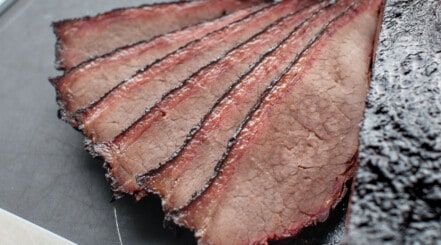
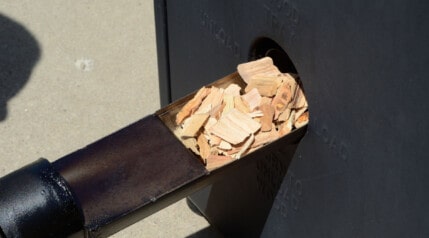
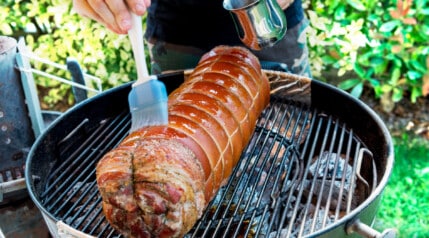
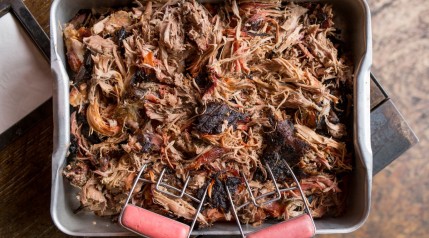
Howdy! Thank you for this great article!!!!
Thanks, Kyle.
Excellent article. Thank you for writing it. I struggle with patience. Need I say more?